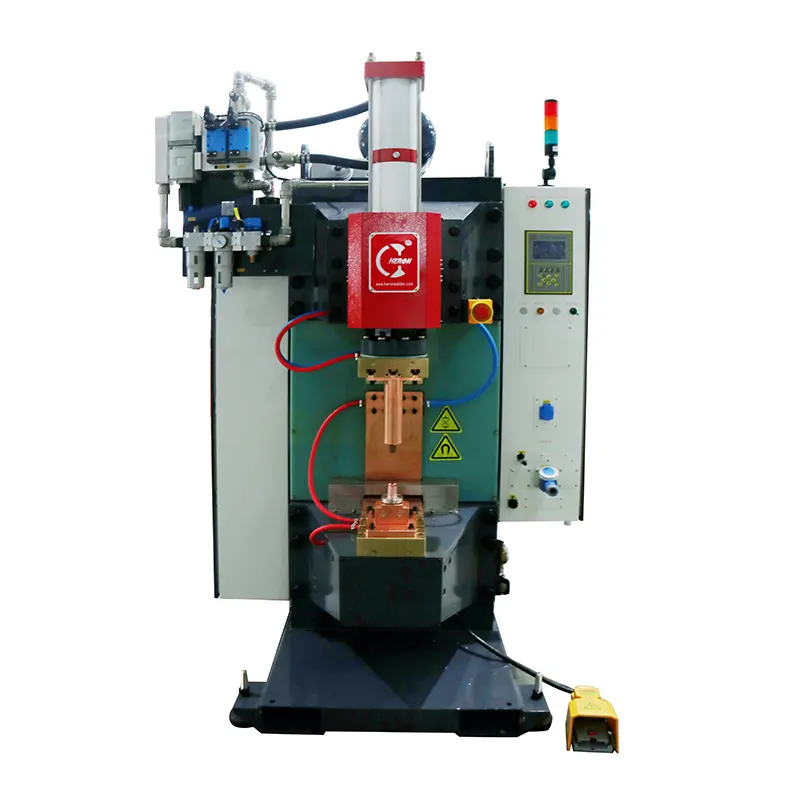Measures to Improve Fatigue Strength of Welded Structures
Any welding defects have varying degrees of stress concentration, especially flaky welding defects such as cracks, incomplete penetration, incomplete fusion and undercuts, which have the greatest impact on fatigue strength. Therefore, the structural design must ensure that each weld is easy to Welding is performed to reduce welding defects, and defects exceeding the standard must be removed.
1. Reduce the stress concentration points of fatigue crack sources on welded joints and structures.
(1) Adopt reasonable structural form
Give priority to butt joints and try not to use lap joints; for important structures, change T-shaped joints or corner joints to butt joints to allow the welds to avoid corners; when using T-shaped joints or corner joints, it is hoped to use full penetration Butt weld.
Try to avoid the design of eccentric loading, so that the internal force of the component can be transmitted smoothly and evenly distributed without causing additional stress.
To reduce sudden changes in cross-section, when plate thickness or width are very different and need to be docked, a gentle transition zone should be designed; the sharp corners or corners on the structure should be made into arc shapes, and the larger the radius of curvature, the better.
Avoid the spatial intersection of three-way welds, try not to set the welds in stress concentration areas, and try not to set transverse welds on the main tension members; when unavoidable, the internal and external quality of the welds must be ensured, and the weld toes should be reduced. stress concentration.
Butt welds that can only be welded on one side are not allowed to place permanent backing plates on the back of important structures; avoid using intermittent welds because there is a high stress concentration at the beginning and end of each section of weld.
(2) Correct weld shape and good internal and external quality of weld
The reinforcement of the butt joint weld should be as small as possible, and it is best to plan (or grind) it flat without leaving any reinforcement after welding;
It is best to use fillet welds with concave surfaces for T-shaped joints instead of convex fillet welds;
The weld toe at the interface between the weld and the surface of the base metal should be smoothly transitioned. If necessary, the weld toe should be ground or argon arc remelted to reduce the stress concentration there.
2. Adjust residual stress
The residual compressive stress existing on the component surface or at the stress concentration point can improve the fatigue strength of the welded structure. For example, by adjusting the welding sequence, local heating, etc., it is possible to obtain a residual stress field that is beneficial to improving the fatigue strength. In addition, you can also Surface deformation strengthening, such as rolling, hammering or shot peening, is used to plastically deform and harden the metal surface, and generate residual compressive stress on the surface to achieve the purpose of improving fatigue strength.
For components with gaps, a one-time pre-overload stretch can be used to obtain residual compressive stress at the top of the gap. Because after elastic unloading, the sign of the gap residual stress is always opposite to the sign of the notch stress during (elastoplastic) loading. This is The method is not suitable to use bending overloading or multiple tensile loading. It is often combined with the structural acceptance test. For example, when a pressure vessel is subjected to a hydraulic test, it can play a pre-overload tensile effect.
3. Improve the structure and performance of materials
First of all, improving the fatigue strength of the base metal and weld metal should also be considered from the intrinsic quality of the material. The metallurgical quality of the material should be improved and the inclusions in it should be reduced. Vacuum melting, vacuum degassing, and even electroslag remelting can be used for important components. Materials such as smelting processes to ensure purity; refining grained steel at room temperature can improve fatigue life; the best organizational state can be obtained through heat treatment, which not only improves strength, but also improves its plasticity and toughness; tempering horse Structures such as martensite, low carbon martensite and lower bainite all have high fatigue resistance.
Secondly, strength, plasticity and toughness should be reasonably coordinated. Strength is the ability of a material to resist fracture, but high-strength materials are sensitive to notches. The main function of plasticity is to absorb deformation work through plastic deformation, reduce stress peaks, and redistribute high stress. , at the same time, the notches and crack tips are blunted, and the expansion of cracks is eased or even stopped. The plasticity ensures that the strength function is fully exerted. Therefore, for high-strength steel and ultra-high-strength steel, trying to improve a little plasticity and toughness will significantly improve its performance. Anti-fatigue ability.
4.Special protective measures
Atmospheric media erosion often affects the fatigue strength of materials. Therefore, it is advantageous to use a certain protective coating. For example, applying a plastic layer containing fillers to areas where stress is concentrated is a practical improvement method.
Contact Person: Christina Liu
Tel: 86 20 87813325 / 86 20 87819588 / 86 20 87815075
Fax: 86 20 87813346
Address: No.63 Xin Yi Road, Guangzhou, Guangdong China 510990














